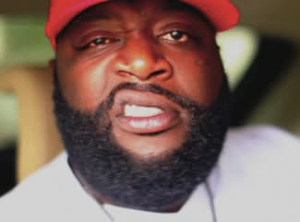Today I turn 25, and as I sit here drinking a greens and BCAA concoction, thinking back about 3 to 4 years ago at this same time when I was drinking a red bull vodka concoction, I would like to believe I’ve learned a thing or two about health, “fitness”, and what the strength and conditioning community has taught me professionally and personally.
I’ll save the ranting and waxing philosophical for the in-person brews, so here are some one-liners and other thoughts that I’ve come to realize from my journey as a strength coach, trainer, and fitness professional in the past year. Perhaps this is more of a list for me to reflect back on in a few more years, but I enjoyed coming up with this conglomeration of thoughts about the “industry” and life in general.
In no particular order:
- Make time for planned vacations.
- Work proximally to distally. So whether this means more “core” work, or “glutes and abs”, or “diaphragmatically breathing before owning other patterns,” move inwards to outwards.
- Understand the philosophies and theories that shape methods, but don’t discuss it all day. Act on it.
- There is more than one way to skin a cat. Choose the most available method, and work with what logistics you have to achieve amazing results.
- Mentors and teachers are there – you need to seek them out. If you cannot physically move to visit them, read what they write, absorb their philosophy, and discard what is useless (for your purposes).
- The internet is a powerful tool – connect with people, make yourself available, and be mindful that people are always watching.
- Thinking about deadlift and squat clusters the night before gives me anxiety.
- Learning to breathe diaphragmatically (finally) has helped this issue (I hope).
[youtube=http://www.youtube.com/watch?v=LTGdAGPDBpo] - Barring genetics, pushing your body to perform seemingly superhuman feats of strength and athleticism weren’t achieved without any minor or nagging injuries.
- Alluding to the above – Get soft tissue work done by a manual therapist regularly (every month, two months, etc.)
- I’m lucky that the people I call my mentors are possibly the nicest people I’ve ever interacted with – opening their homes to me, sharing meals, and always open to chat. Thank you.
- I’m not the smartest person on the block, but I can 1. Surround myself with other smart people and 2. [Attempt to] Work harder than the average bear to prove my worth.
- Biggest tool as a strength coach and personal trainer = reset the body’s position, then perform a dynamic warm-up to stretch, activate, and increase range of motion in restricted movement patterns.
- Plan the hunt. Hunt. Discuss the hunt.
- Rick Ross’ grunt is the rapping equivalent to Rage Against the Machine’s random yelling.
- Eat better meat, eggs, and fruits and veggies.
- Protein shakes are just another way to increase protein on the go; it isn’t the end-all be-all for protein sources.
- Supplements are good. (I would need to get blood tested to measure where I am deficient however.)
- There is still so much more to learn about the body.
- There are 168 hours in a week, and 672 hours in a given calendar month. If you sleep (6 hrs x 7 days x 4 weeks) that will equal 168 hours. So out of a given month, you will sleep a quarter of it away. Sleep on that and see how it affects your approach to work (pun intended).
- Work, rest, play, pray.
- The current state of medical care unfortunately does not prepare the general population (along with athletes) for a life of healthy living. I don’t intend to dismiss the role of a doctor in our nation, but I’ve heard stories of general practitioners dismissing injuries because nothing is “seen as abnormal” within first passing (since they are not movement specialists), despite the athlete or client being in pain. Further, if there is an issue, the “tool” often utilized comes in the form of a pill, aimed at masking the issue, or an invasive intervention such as surgery for a non-invasive issue. At the end of the day, I value proactive decisions vs. reactive choices.
- Quantify what your clients and athletes’ subjectively feel in order to see perceived exertion from life, lifting, and their ability to recover. Whether it is talking to them personally, writing down RPEs, or tracking HRV, there are bigger patterns at hand that are beyond deadlift PRs and 40 yard dash times.
- Failure, whether athletically, professionally, or otherwise, is inevitable in the beginning. The key is what will you learn from those failures, and how will you act afterwards?
- Make time and spend time with your family, friends, and loved ones.

